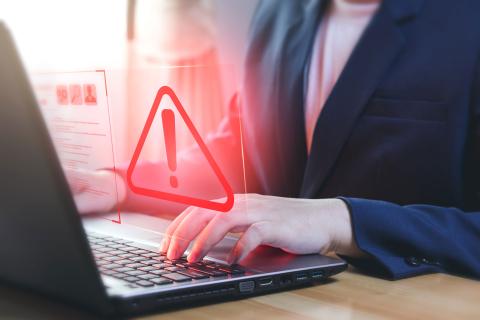
Drupal, a popular content management system (CMS) used by businesses, institutions, and individual users alike, offers incredible functionality and versatility. Like all software, Drupal releases new versions that come with enhanced features, bug fixes, and essential security updates. But what happens if you don’t keep your Drupal site updated? In this blog, we'll delve into the potential risks of not upgrading your Drupal site and offer solutions to keep your platform and data safe.
1. Security vulnerabilities
The most alarming risk of not updating your Drupal site is becoming vulnerable to security threats. With each update, Drupal's team often fixes potential vulnerabilities that have been discovered since the last release. Hackers are always on the lookout for sites running outdated software because they can exploit known vulnerabilities more easily.
2. Incompatibility issues
As web technologies evolve, older software versions can become incompatible with new plugins, themes, or hosting environments. Running an outdated Drupal version might mean you can't leverage the latest tools and features, potentially putting you at a competitive disadvantage.
3. Poor performance
Newer versions of Drupal often come with optimizations that enhance website speed and responsiveness. Not upgrading could lead to a sluggish site, impacting user experience and search engine rankings.
4. Limited support
As newer versions of Drupal emerge, the community and official channels will inevitably focus their attention on supporting the latest releases. Older versions might not receive the same level of community support, documentation updates, or third-party module upgrades.
5. Missed features
Each Drupal update doesn’t just patch vulnerabilities; it also brings new features and improvements. Not upgrading means you're missing out on the best that Drupal has to offer.
6. Potential SEO impact
A slow, buggy, or compromised site can negatively impact your search engine rankings. Google, for instance, prioritizes secure, fast-loading sites, so an outdated Drupal installation might be hampering your SEO efforts.
7. Increased costs in the long run
You might think you're saving time and money by not upgrading, but the longer you wait, the more complex and costly the upgrade process can become. Moreover, if your site is compromised due to outdated software, the costs of fixing the issues and the potential loss of business can be significant.
Mitigating the Risks: Solutions
With Drupal end-of-dates drawing near, it's important to know your options on how to handle the upgrades properly. While you can regularly update to get the benefits from the latest security patches and features, remember, there's a difference between minor updates (like going from Drupal 8.1 to 8.2) and major upgrades (like moving from Drupal 7 to Drupal 9).
Upgrade options include the following:
1. Leaving Drupal with a static site or a different CMS, like Wordpress.
When considering the future of a website, some organizations or individuals ponder the idea of moving away from Drupal entirely. This can be due to various reasons, such as cost, maintenance complexity, or changing requirements. One option is to switch to a static site. Unlike dynamic CMS-driven sites, static sites are pre-rendered and don’t rely on real-time database queries. This can lead to faster load times, reduced server costs and end-of-life issues, but at the expense of CMS dynamic capabilities.
Another popular choice is transitioning to another CMS, like WordPress. Known for its user-friendly interface and extensive plugin ecosystem, WordPress might be favored by those looking for a more intuitive, less technical platform than Drupal.
2. Upgrading your website while keeping your existing functionality and look.
A site upgrade becomes essential with Drupal end-of-life dates happening as soon as this year. The goal of an upgrade is to migrate to a newer version or platform while ensuring that the user experience remains unchanged. This might involve updating the backend, ensuring compatibility with newer versions of software, or addressing potential security vulnerabilities. It's a way to benefit from the latest technological advancements without altering the familiar and functional front-end that users have come to know.
3. Rebuild your site into a feature-rich, modern, user experience machine.
Sometimes, merely updating or upgrading isn't enough. This is not just about making the site look modern; it's about re-imagining the entire user journey. A total rebuild can involve implementing new interactive features, optimizing for mobile devices, integrating with contemporary online platforms, or using advanced technologies like AI or VR. The focus shifts from mere online presence to creating immersive digital experiences. This approach is about anticipating user needs and positioning the website not just as a source of information, but as a dynamic tool for engagement and interaction.
Knowing your options is important, and getting the right upgrade can save you time and money, and most importantly, help keep your website running smoothly for years to come. See what's best for you.
4. Last but not least: Ensure your Drupal site is hosted and managed properly
The first hallmark of a good Drupal hosting service is its commitment to ensuring regular updates. Like any other software, Drupal undergoes continuous improvement, with the developers regularly rolling out updates to enhance functionality, optimize performance, and rectify any bugs. But more than just mere functional enhancements, these updates often address critical security vulnerabilities as well. See hosting solutions.
In Conclusion
Like all software, Drupal needs regular attention and maintenance. The risks of not upgrading in general or the right way are clear: potential security breaches, diminished performance, and missed opportunities for enhanced functionality. By being proactive and following best practices, you can ensure your Drupal site remains a secure, effective, and powerful tool for years to come.
